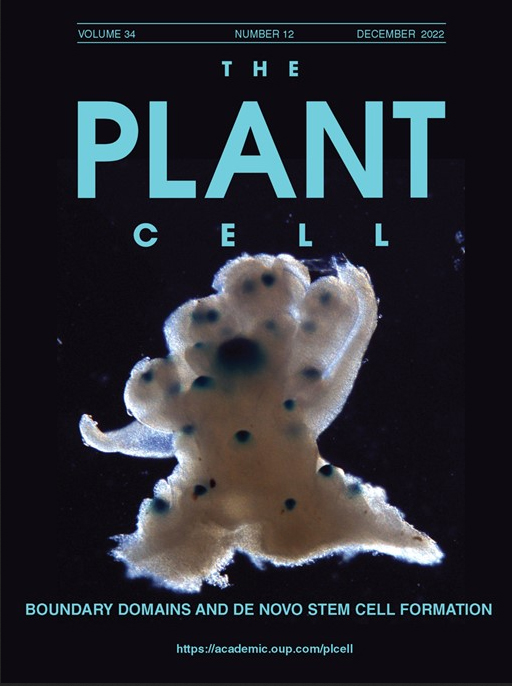How are new stem cells formed in plants?
development
meristem
flower
regulation
transcription factor
Publication in the journal The Plant Cell, 27 August 2022
The architecture of plants becomes more and more complex as they grow as a result of the formation of new branches. Such branching involves the creation of new growing points, or meristems, in which newly formed stem cells are present. These meristems are formed through different steps with an initiation phase during which the new meristem emerges and an organization phase during which it will acquire its structure, in particular a population of newly-formed stem cells at its centre.
The study carried out in the FTA "Transcription Factors and Architecture" team in collaboration and published in The Plant Cell journal reveals a novel step key for the appearance of a new population of stem cells in meristems. This work shows that the CUP-SHAPED COTYLEDON (CUC) genes that are required for the early phases of meristem initiation have to be repressed to allow stem cell formation. The repressors of CUC genes have been identified and their mutation leads to defects in the overall organization of meristems, the formation of the stem cell population and ultimately to a delay in branching. The mutation of these factors also affects the establishment of stem cells in the flowers which are modified axillary meristems, thus demonstrating the conservation of the regulatory mechanism revealed here for all the aerial meristems newly formed during the life of the plant.

The study carried out in the FTA "Transcription Factors and Architecture" team in collaboration and published in The Plant Cell journal reveals a novel step key for the appearance of a new population of stem cells in meristems. This work shows that the CUP-SHAPED COTYLEDON (CUC) genes that are required for the early phases of meristem initiation have to be repressed to allow stem cell formation. The repressors of CUC genes have been identified and their mutation leads to defects in the overall organization of meristems, the formation of the stem cell population and ultimately to a delay in branching. The mutation of these factors also affects the establishment of stem cells in the flowers which are modified axillary meristems, thus demonstrating the conservation of the regulatory mechanism revealed here for all the aerial meristems newly formed during the life of the plant.

Back

Blue staining of the stem cell populations in an Arabidopsis thaliana apex
Scientific Contact:
Patrick Laufs, FTA team
Reference:
De novo stem cell establishment in meristems requires repression of organ boundary cell fate
Antoine Nicolas, Aude Maugarny-Calès, Bernard Adroher, Liudmila Chelysheva, Yu Li, Jasmine Burguet, Anne-Maarit Bågman, Margot E Smit, Siobhan M Brady, Yunhai Li, Patrick Laufs
The Plant Cell, 27 August 2022
https://doi.org/10.1093/plcell/koac269
Comment:
CUP-SHAPED COTYLEDON repression: a side project?, Sofía Otero
The Plant Cell, https://doi.org/10.1093/plcell/koac272